According to Wolff Olins, a brand exists in the overlap between commerce, culture and technology. The purpose of a minimum viable brand is to engage people without overcomplicating things. This morning we had a chance to hear from Ije Nwokorie and Melissa Andrada of Wolff Olins at the Google Startup Campus, in a talk organised by General Assembly. Ije and Melissa work with some of the biggest brands in the world so it was a little weird to hear them adopting the tools and mindset of a small startup. But the fit was perfect and the lessons were really practical.
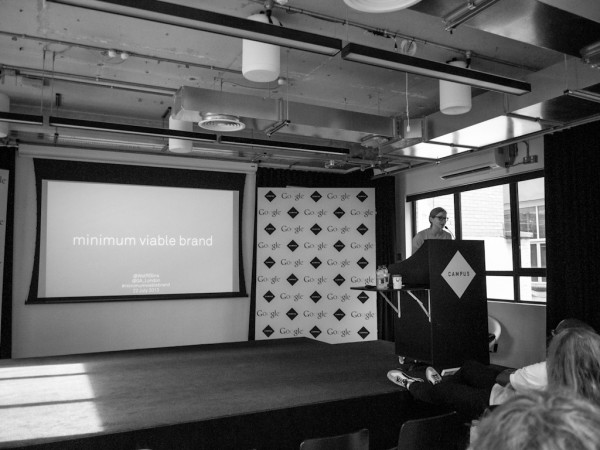
To me, lean branding is an ongoing process that dovetails well with the Growth Hacking trend in Silicon Valley (identified by Patrick Vlaskovits and friends). The ‘Lean Startup’ movement has already influenced how small companies do their marketing, but it’s now starting to influence how bigger companies think about branding. The manifesto of lean is speed, agility, experimentation and iterative improvements. All of which are useful when rethinking any company’s brand (big or small).
Brand strategy for startups
Startups have some unique challenges but the task of winning customers is still a process that starts with creating a compelling brand. Of course, the brand isn’t just the logo. It’s the reputation of the company in the mind of the audience.
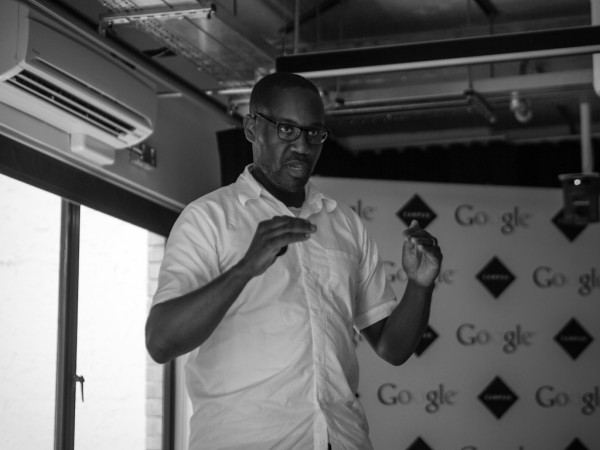
Wolff Olins is one of the top branding agencies and I’ve long been a fan of their brand strategy work. Ije Nwokorie is the Managing Director of Wolff Olins London and Melissa Andrada is a Lead Strategist and a Lecturer at General Assembly. At Google Campus today we talked about how to turn an early stage startup into a high-growth business. Ije and Melissa understood that even with a great team, it’s hard to find the bandwidth for strategic thinking and branding. It’s also hard to differentiate in a crowded marketplace.
Minimum Viable Brand
In the Lean Startup world, there is an idea of building the “minimum viable product” and testing it as soon as possible with real users. The purpose of a minimum viable product is to focus on what matters to users and to achieve growth.
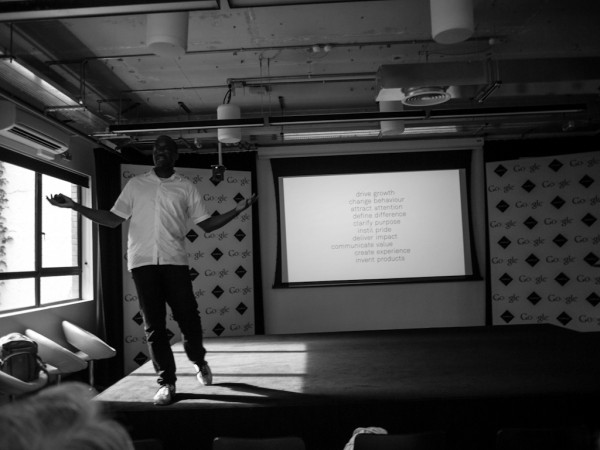
The purpose of the minimum viable brand is to engage people and influence behaviour. To Ije, the minimum viable brand is already hard-wired into your product. It blends technology and storytelling. There are two main components of the minimum viable brand:
- Pitch: What we do, why we do it.
- Assets: How you make it yours.
Ije used the example of the Everything Everywhere launch where the minimum viable brand idea helped the team focus on the most important brand and product elements for the launch. They also talked about a couple of interesting startup examples from the education technology space.
The product is the brand
For product-led startups the brand is probably already latent in the business and the task is to ‘harvest’ the brand from the product. Ironically, engineers and developers usually enjoy the collaborative process of uncovering a minimum viable brand because it’s so practical. Whereas some marketing professionals can find it confronting because it brings the rest of the team inside something that is usually owned by the marketing team.
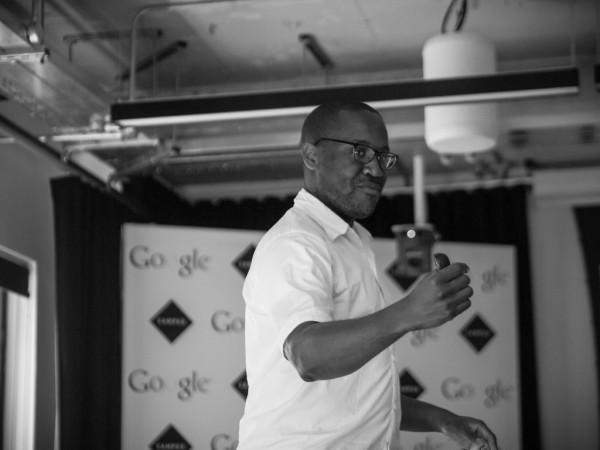
The outputs of a branding process for a startup should be things that help keep the brand alive day-to-day. Examples included brand manifestos that live on as videos, posters or mini-websites. The brand artefacts need to be both powerful and useful.
Melissa admitted that some of their advice was predicated on having design-thinking as a shared understanding in your team and/or having designers on the team. Ije noted, “Design thinking is fundamental to what we’ve talked about today, otherwise we end up with things that are cold.”
Wolff Olins Minimum Viable Branding Toolkit
The minimum viable brand toolkit is a set of questions that you can use to achieve enough clarity to be able to communicate powerfully and persuasively:
- Why it matters: The bigger purpose of the brand in the world.
- Why we exist: How the brand achieves the bigger purpose.
- What can you do: The action the user takes and the impact on their life.
- How it will feel: The emotional experience for the user.
The first part of the toolkit is the pitch. The second part of the toolkit is the brand assets that are used to express the brand including the name, tagline, logo, and visual identity.
Q&A on creating a minimum viable brand
Ije and Melissa took questions from the floor and the discussion was one of the best parts of the morning:
Q: What channels should we use to communicate the brand to users?
A: The product itself is the best way for a startup to communicate.
Q: Should we define the brand at the start, or wait until we’re ready to scale?
A: The minimum viable brand is a starting point so clarify it as soon as possible.
Q: If the minimum viable brand is a starting point, then what’s the end point?
A: The brand should contain something essential that survives. Whereas, the minimum viable product might be entirely abandoned as the startup evolves while learning from customers.
Q: What feedback loops and metrics should we be tracking?
A: Testing can be too clinical and human engagement is probably more relevant to brand creation. You can’t have brand conversations in isolation from the product. Instead track metrics and feedback on the product and brand as a holistic “offer”.
Q: When should we lock-in the company name?
A: The name can be created around the purpose of the company, not simply the product. That makes it more flexible and durable as you evolve the product.
Q: What tools from the corporate Wolff Olins toolkit did you consider for the toolkit, but not include?
A: The Brand Butterfly is the overlap between “What’s wrong in the world” and “What you can do well.” It’s a powerful tool for creating purposeful brands but it can be a bit too conceptual for fast-moving startups.
Lean Branding
The minimum viable brand concept fits into a larger conversation about lean branding. Adrian Howard of Quietstars has been a vocal advocate of bringing lean thinking into the branding process. He spoke at about the idea of Lean Branding for Startups at Lean UX NYC which was on while we were in New York earlier this year.
I’ve found that lean branding runs on multiple race tracks, with lean principles being relevant to strategy, copywriting and design. I did a quick YouTube video on Lean Branding last month about how the minimum viable brand is made up of:
- Minimum viable strategy (with sufficient clarity for focused decision making)
- Minimum viable messaging (with sufficient persuasiveness to change behaviour)
- Minimum viable design (with sufficient consistency to be memorable)
It’s exciting to see a traditional industry like brand design starting to be disrupted by new ideas. My book on digital marketing for tech companies has a section on lean branding. I’m looking forwards to hearing more from Ije, Melissa and the Wolff Olins team as they engage more with the London startup scene. As Melissa and Ije summed up today, “We like the tools but in the end, a brand is a mix of maths and magic.”
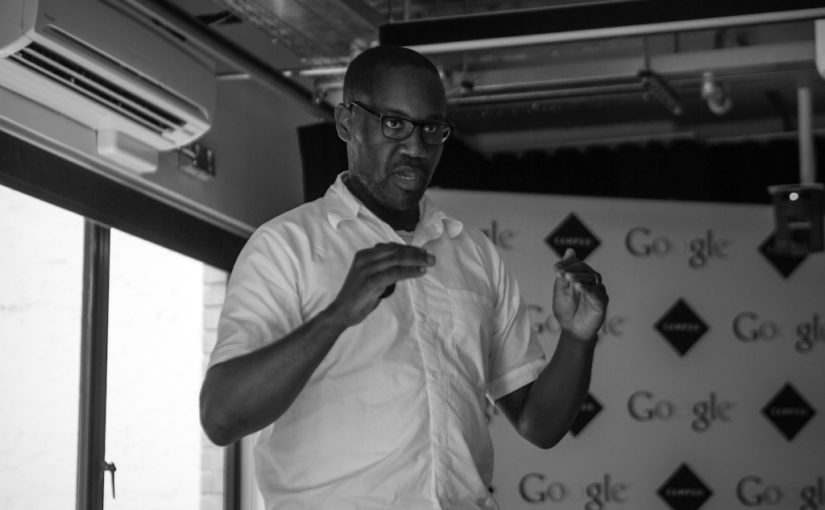
I like the concept it reminds me of the Golden Circle model but I sometimes find it difficult to apply this to a real life example (some are far easier than others) a write up of some of the examples they gave within that framework would be amazing!